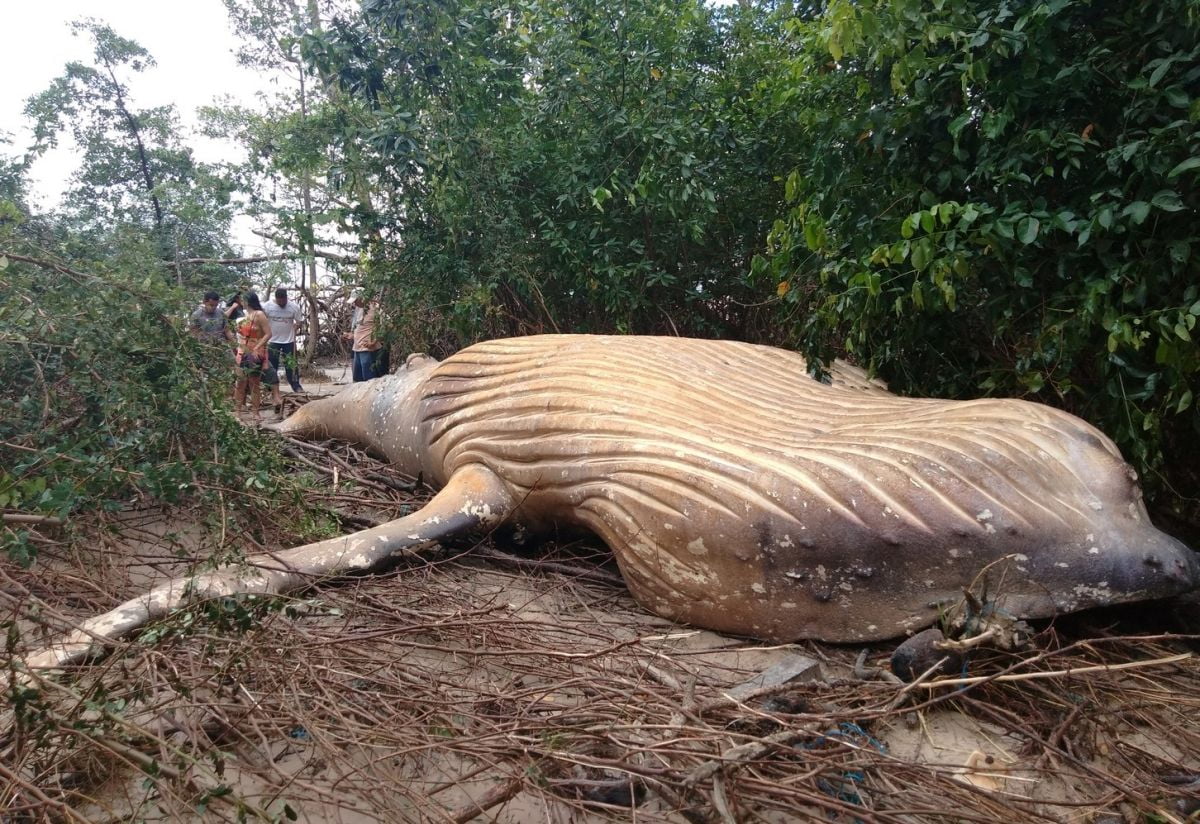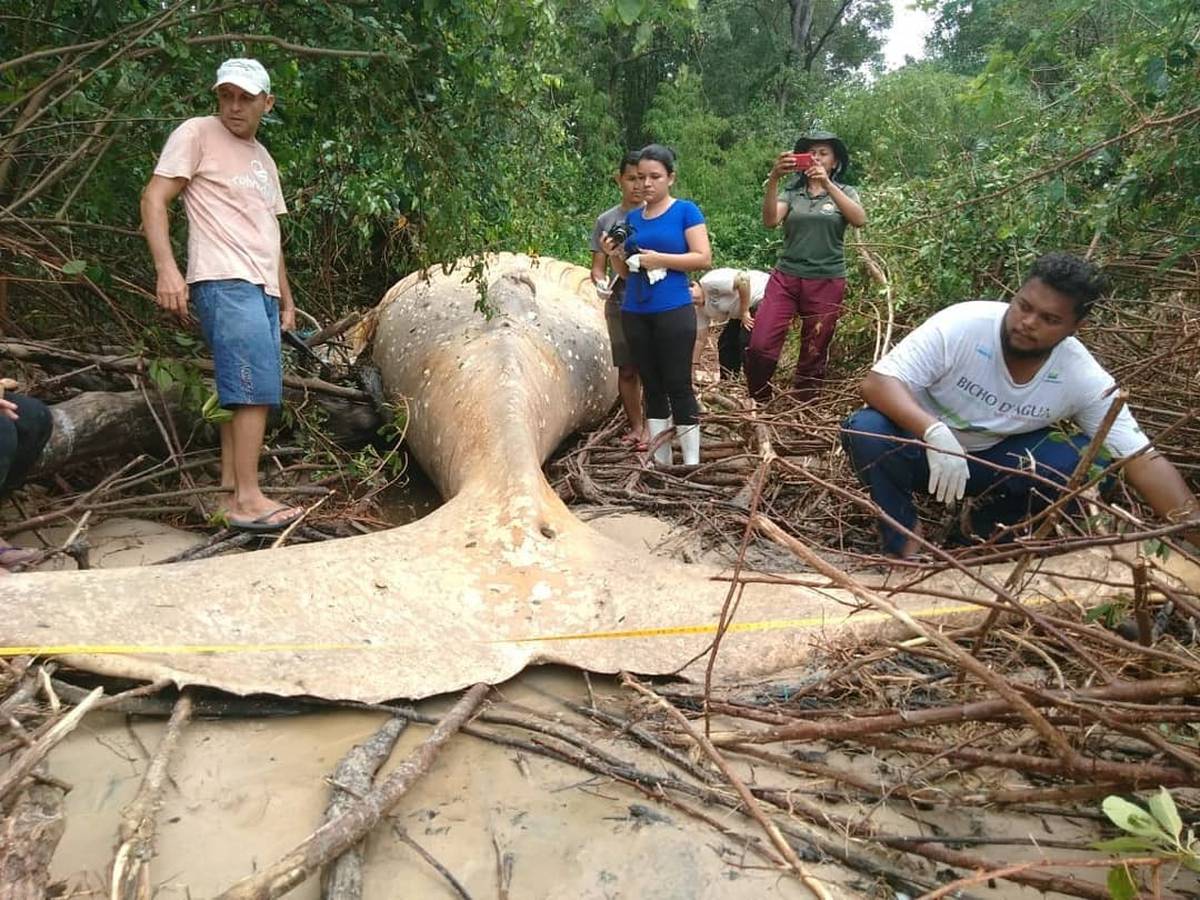A 36-foot-long whale (yes, a whale) was recently discovered in Brazil’s remote jungle, miles from its natural habitat, when scavenging vultures alerted local officials with their screeching.

Image credit: Bicho D’agua Institute/Facebook
It’s no news that the Amazon rainforest teems with life, but one recent discovery left even seasoned wildlife experts and biologists baffled. In the undergrowth of Brazil’s Marajó Island, they found nothing less than the carcass of a 10-ton humpback whale.
Preliminary theories suggest that the whale washed ashore during a storm or that it was already dead when rising tides carried it on land. However, scientists are confused as to how it managed to travel so far inland, or why it was swimming off the Marajó coast at all.

Image credit: Bicho D’agua Institute/Facebook
Marine specialists from local conservation group Bicho D’agua Institute are now examining the carcass, with preliminary assessments suggesting that the young whale died a couple of days before being found some 50 feet from the shore. Project leader Renata Emin is captivated by the mammal’s discovery and intrigued about its journey.
“We’re still not sure how it landed here, but we’re guessing that the creature was floating close to the shore and the tide, which has been pretty considerable over the past few days, picked it up and threw it inland, into the mangrove,” she noted.
“Along with this astonishing feat, we are baffled as to what a humpback whale is doing on the north coast of Brazil during February because this is a very unusual occurrence,” she added.